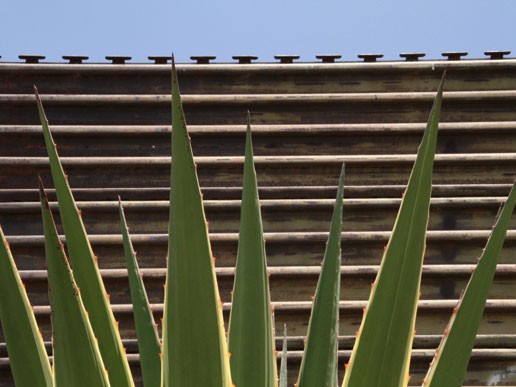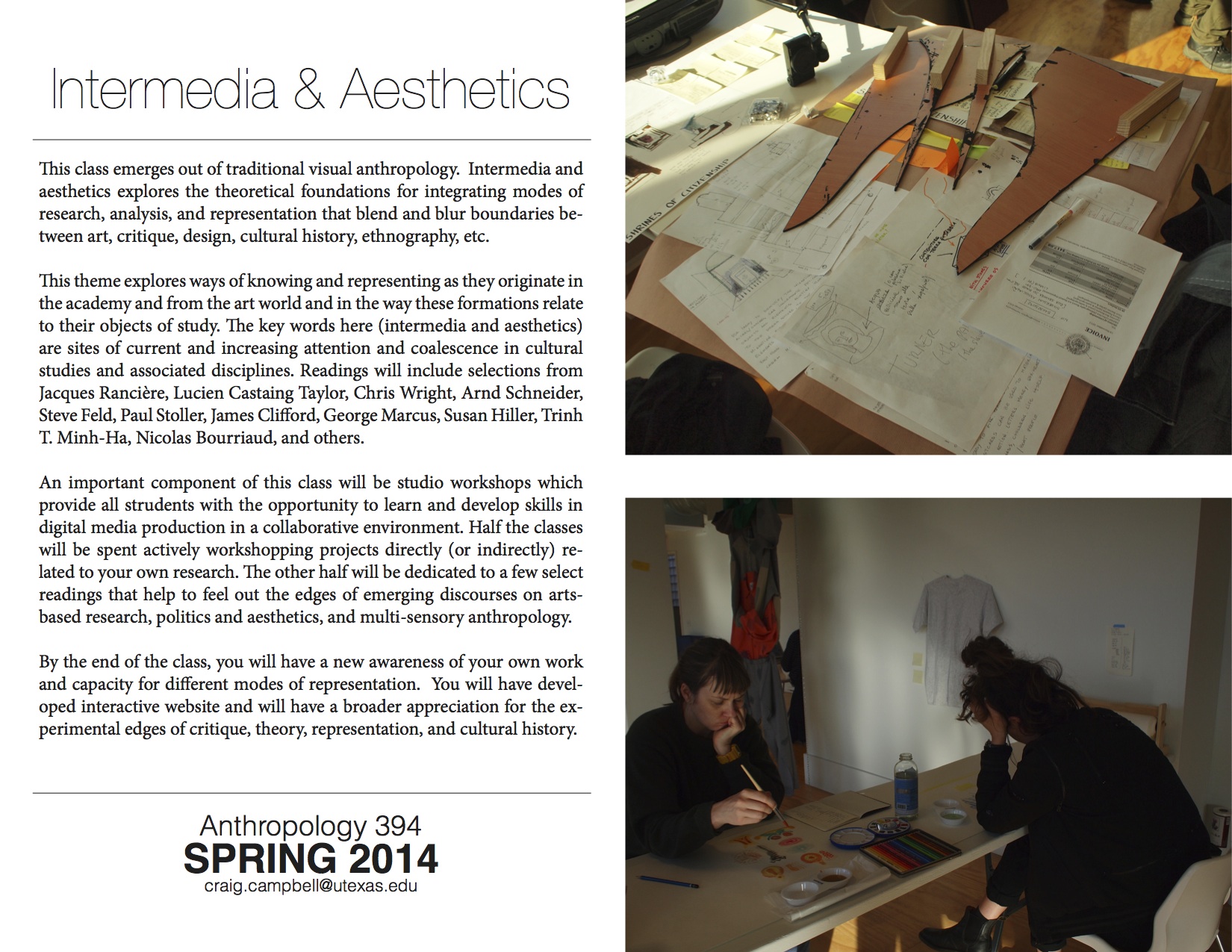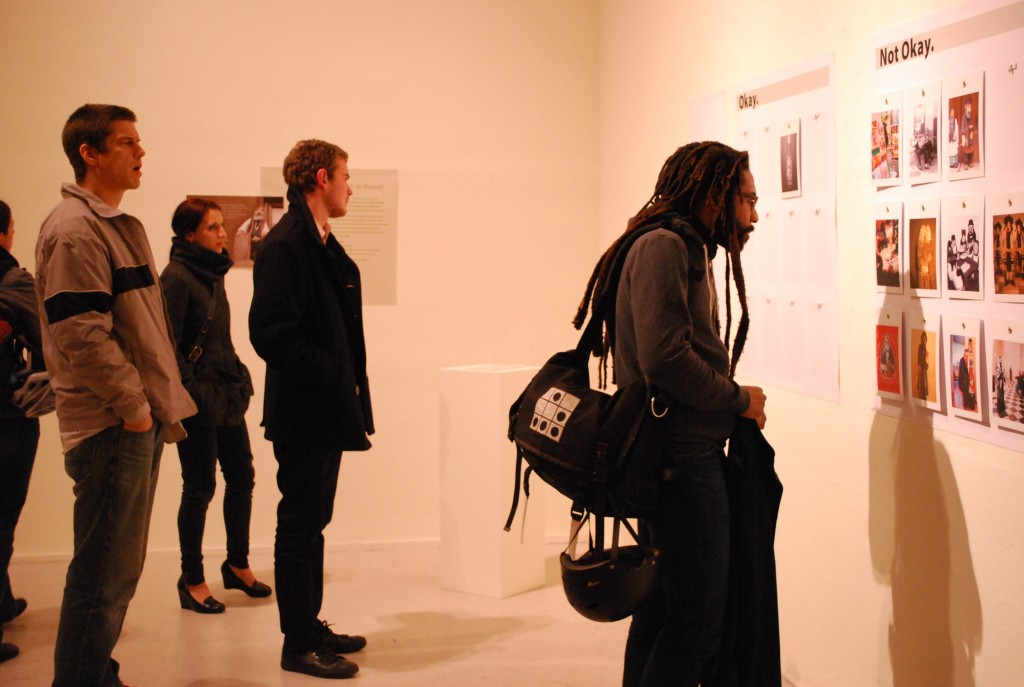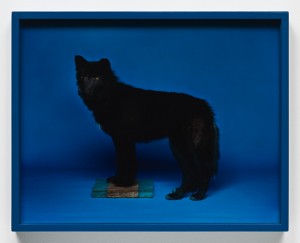- What is a storyboard and how to do one:
- National Film Board of Canada
Author Archives: metafactory
February 4, 2014
Sorry to have missed class on Tuesday for the big ‘snow day’ in Austin. We’ll have a bit of catching up to do. Here’s what I’d like you to focus on:
- Please write a short (no longer than 5-page) summary of your original research project. This is something you need to share with the rest of the class so we can start to understand your project and be ready to contribute in the workshops. If you email this to me by next class I’ll print enough copies to share with everyone.
February 4
- Present plans for your final project (first presentation)
- Discuss: Taylor1996, Buchler2004, Grimshaw2005
- Workshop Obstruction #1
February 11
- Present plans for your final project
- Hand in a skills plan for final project
- Workshop Obstruction #1
Borderline Ethnography
Artist and Anthropologist Fiamma Montezemolo. Fiamma will discuss her work as an ethnographer and as an artist working on the US-Mexico border. On Sunday, February 16th, she will present her award winning experimental video Traces (along with two other works by Sergio de la Torre). On Monday, February 17th, Fiamma will deliver a lecture in the Department of Anthropology at UT Austin.
Spring 2014
Theory Surge
Archive & Ephemera: Theory Surge.
At the bottom is a list of the articles you have all pitched.
Based on your responses, I’d like to propose that we read the following three articles for April 22nd:
- Bossart, William H. “Heidegger’s Theory of Art.” The Journal of Aesthetics and Art Criticism 27, no. 1 (1968): 57–66.
- Marker, Chris, Brian Holmes, and Exact Change. Immemory: A Cd-rom. Exact Change, 2008.
- Massumi, Brian. Deleuze, Guattari, and the philosophy of expression. Toronto: Univ. of Toronto Press, 1997.
Get the articles here: https://courses.utexas.edu/bbcswebdav/xid-22114502_1
Full List….
Bossart, William H. “Heidegger’s Theory of Art.” The Journal of Aesthetics and Art Criticism 27, no. 1 (1968): 57–66.
Dabashi, Hamid. Dreams of a Nation: On Palestinian Cinema. Verso Books, 2006.
Griesemer, J., and S. Star. “Institutional Ecology,‘Translations’ and Boundary Objects: Amateurs and Professionals in Berkeley’s Museum of Vertebrate Zoology, 1907–1939.” Social Studies of Science 19, no. 3 (1989): 387–420.
Heffernan, James A. W. “Critical Response Staging Absorption and Transmuting the Everyday: A Response to Michael Fried.” Critical Inquiry 34, no. 4 (April 2008): 818–834. doi:10.1086/592545.
Marker, Chris, Brian Holmes, and Exact Change. Immemory: A Cd-rom. Exact Change, 2008.
Massumi, Brian. Deleuze, Guattari, and the philosophy of expression. Toronto: Univ. of Toronto Press, 1997.
Murphie, Andrew. “Clone Your Technics.” Inflexions 1, no. How is research-creation? (2008). http://www.senselab.ca/inflexions/pdf/pdf/Murphie.pdf.
Richards, Sandra L. “What Is to Be Remembered?: Tourism to Ghana’s Slave Castle-Dungeons.” Theatre Journal 57, no. 4 (2005): 617–637.
Star, Susan Leigh, and James R. Griesemer. “Institutional Ecology, `Translations’ and Boundary Objects: Amateurs and Professionals in Berkeley’s Museum of Vertebrate Zoology, 1907-39.” Social Studies of Science 19, no. 3 (August 1, 1989): 387–420. doi:10.1177/030631289019003001.
Woolgar, Steve. “Configuring the User: The Case of Usability Trials.” A Sociology of Monsters: Essays on Power, Technology and Domination 58 (1991): 66–75.
Upcoming for April 1
- Discuss readings
- Walking, sensing, belonging: ethno-mimesis as performative past”, ONeill&Hubbard – Walking Sensing Belonging – 2010
- “The reorganization of the sensory world”, porcello_etal2010
- “A few remarks on the method of Jacques Ranciere”, Ranciere2009
- Rancière, Jacques. 2006. The politics of aesthetics : the distribution of the sensible. Pbk. ed. London; New York: Continuum.
- Present Obstruction #2
- I will introduce Obstruction #3 and we’ll work on it with the time we have.
Readings for April 8.
- Pinney, Christopher. 2001. “Piercing the Skin of the Idol.” In Beyond Aesthetics: Art and the Technologies of Enchantment, edited by Christopher Pinney and Nicholas Thomas, 157–179. Oxford: Berg.
- Taylor, Lucien. 1996. “Iconophobia.” Transition (69): 64–88.
- Taylor, Lucien. 1998. “‘Visual Anthropology Is Dead, Long Live Visual Anthropology!’” American Anthropologist 100 (2): 534–237.
- Zipped File of Readings
Other instructions.
- Continue to work with your production journals. You should have at least two artists/influences that you’ve documented in your journals at this point (and be ready to talk about them when we have time). By the end of semester, I’d like you to have three artist/influences in the production journal.
- Develop your obstructions and your final project at a good rate. Don’t short-change yourself with time. This work can be more abstract and strange than typical academic work so you need to give yourself time for editing, fixing, etc. You really should be finished a strong draft of your final project a couple weeks before the end of semester.
Spring break readings
- “Walking, sensing, belonging: ethno-mimesis as performative past”, ONeill&Hubbard – Walking Sensing Belonging – 2010
- “The reorganization of the sensory world”, porcello_etal2010
- “A few remarks on the method of Jacques Ranciere”, Ranciere2009
Above are the articles I’d like you to read over the break. Please come to class on the 18th prepared to discuss these articles, present your production journals, and workshop obstruction #2.
January 2013
Welcome to the course website. I will be actively updating the website as we move through the semester. For the time being, please purchase the two required books from a local or on-line retailer. They have not been ordered at the bookstore:
Marcus, George E, and Michael M. J Fischer, eds. Anthropology as Cultural Critique: An Experimental Moment in the Human Sciences. Chicago: University of Chicago Press, 1986.
Rancière, Jacques. 2006. The politics of aesthetics : the distribution of the sensible. Pbk. ed. London; New York: Continuum.
To read for next class (January 28).
George E. Marcus and Erkan Saka, “Assemblage,” Theory Culture Society 23, no. 2-3 (May 1, 2006): 101-106. [marcus-saka2006.pdf]
Arnd Schneider, “Three modes of experimentation with art and ethnography.,” Journal of the Royal Anthropological Institute 14, no. 1 (March 2008): 171-194. [schneider2008.pdf].
Michael Taussig, “The Diary as Witness: An anthropologist writes what he must,” The Chronicle Review, 2003.
Anxiety of Photography
Saturday, September 10
2pm
Photography can be thought of as a medium, a tool, an object, a practice, or, more often than not, some combination thereof. Through approximately forty works, some of them created for the exhibition and some shown for the first time, The Anxiety of Photography examines the growing number of artists who embrace photography’s plasticity and ability to exist, sometimes uneasily, in multiple contexts.
The fluidity of photography can produce fundamental anxieties for both artist and viewer. Many of the works presented here reflect on the changing nature of our relationship to the materials and materiality of photography, as artists produce prints from hand-painted negatives, violently collide framed pictures, or arrange photographs and objects in uncanny still lifes. The “objecthood” of the image is powerfully expressed throughout the exhibition, both in front of the camera and in the presentation of the work itself.
This tendency toward materiality, part of a larger trend in contemporary art of the last decade, is accompanied by a reinvestment in studio practice and an interweaving of personal content within the work. Many of the artists included employ an expanded collage aesthetic and have fully digested notions of appropriation. Borrowed images coexist with photographs taken by the artist; images produced in a commercial context are reused within the artist’s studio.
By playing with the photograph’s three essential qualities—being flat, static, and bounded—artists are investigating just what a photographic object and a photographic practice can be. They use the puzzlement that photographs induce to compel a more careful state of looking, a more open dive into pictures. They are fully mobilizing photography’s resources.
The exhibition in Austin is presented by Arthouse at the Jones Center and the Austin Museum of Art.
Digital photo-exhibition
The Knight Center for Journalism in the Americas is hosting an innovative, all-digital photo exhibit and panel discussion on covering migration in the Americas as part of the 2011 Austin Forum on Journalism in the Americas.
The panel, “Covering International Migration in Central and North America,” is from 6-7:30 p.m. Thursday, Sept. 8, in the LBJ conference room of the College of Communication building (CMA) on the University of Texas at Austin campus. Chaired by Charles Hale, the director of the Lozano Long Institute of Latin American Studies, the panel will include Julián Aguilar of the Texas Tribune; Cecilia Alvear of the National Association of Hispanic Journalists and UNITY Journalists of Color; Oscar Chacón of the National Alliance of Latin American and Caribbean Communities; Fabián Sánchez of i(dh)eas, the association for strategic litigation for Central Americans in Mexico; and Jose Luis Sierra of New America Media.
The innovative digital exhibit of photographs on migration in the Western hemisphere, “Cruzando Fronteras en las Américas/Crossing Borders in the Americas,” begins at 7:30 p.m. Thursday in the lobby of the CMA building.
Rather than a traditional display of print-outs, photos in this exhibit will be displayed digitally on large plasma screens. Work will be on display from photographers throughout the Americas, including Toni Arnau, Donna DeCesare, Irene Herrera, Felipe Jacome, Carl Juste, Lisa Krantz, Pepe Mateos, Edu Ponces, Eli Reed, Eduardo Soteras, and Nuri Vallbona.
The panel and photo exhibit are part of the 9th Austin Forum on Journalism in the Americas: Media Coverage of Migration in the Americas, to be held Sept. 8-10, and organized by the Knight Center for Journalism in the Americas and the Latin American and Media programs of the Open Society Foundations.




